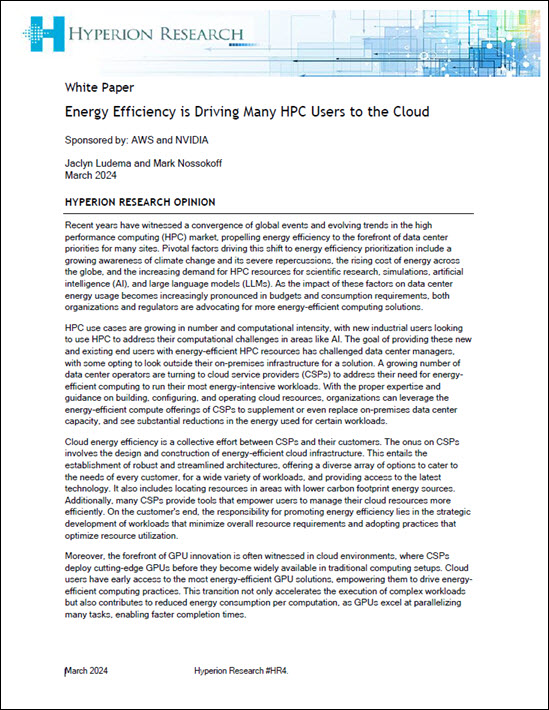Sept. 18, 2023 — A $72.5 million investment from the U.S. National Science Foundation will drive the development of advanced materials needed to address major societal challenges. The Designing Materials to Revolutionize and Engineer our Future (DMREF) program will fund 37 new four-year projects. DMREF 2023 award recipients: High-throughput screening of electrolytes for the next […]
SambaNova: New AI Chip Runs 5 Trillion Parameter Models
Specialty AI chip maker SambaNova Systems today announced the SN40L processor, which the company said will power SambaNova’s full stack large language model (LLM) platform, the SambaNova Suite. Manufactured by TSMC, the SN40L can serve a 5 trillion parameter model, with 256k+ sequence length possible on a single system node, according to the company.
CIQ Bundles OpenRadioss and ParaView on Rocky Linux 9.1 for Computation of Shapes
LAS VEGAS, September 18, 2023 — CIQ announced today at Oracle CloudWorld that it has made a software stack for high-performance computation of shapes available on Oracle Cloud Marketplace. This application package — a bundle of OpenRadioss and ParaView on Rocky Linux 9.1 — helps enterprises simulate and visualize complex, non-linear problems on Oracle Cloud Infrastructure (OCI). CIQ […]
Livermore Lab Researchers Win 3 R&D 100 Awards
The award winners include a software suite that helps apply deep learning techniques to science and data challenges in cancer research; software that helps better understand the power, energy and performance of supercomputers; and a number format that permits fast, accurate data compression for modern supercomputer applications.
Building a Capable Computing Ecosystem for Exascale
With ECP, working together was a prerequisite for participation. “From the beginning, the teams had this so-called ‘shared fate,’” says Siegel. When incorporating new capabilities, applications teams had to consider relevant software tools developed by others that could help meet their performance targets, and if they didn’t choose to use them….
Vertiv Increases Manufacturing Capacity for Chilled Water Solutions
Piove di Sacco, Italy, September 18, 2023 –Vertiv (NYSE: VRT), a provider of digital infrastructure and continuity solutions, unveiled an upgraded testing room at its thermal management centre near Tognana, Italy. This investment increases the facility’s testing capacity and manufacturing capabilities in the existing space. The upgraded testing room will allow Vertiv to do standard […]
$100M Series B for Generative AI Platform Writer
SAN FRANCISCO — Writer, a generative AI platform for enterprises, announced its Series B funding round of $100 million today. The round is being led by ICONIQ Growth with participation from WndrCo, Balderton Capital and Insight Partners, who led the Series A, and Aspect Ventures, who led the seed round. This round includes participation from […]
HPC News Bytes 20230918: New AMD CPUs and Intel FPGAs, Arm’s IPO and Strategic Pivot, AI for Science
A happy mid-September morning to you. Here’s a hop (4:54) through recent HPC news, including: AMD launches EPYC 8004 CPUs for energy- and space-constrained workloads; Intel announces FPGAs going into its Innovation 2023 event; Arm’s successful IPO and strategic pivot; a report on AI for science….
TSMC Moves Its Renewable Energy Target Forward to 2040
HSINCHU, Taiwan, R.O.C., Sep. 15, 2023 – TSMC (TWSE: 2330, NYSE: TSM) today announced an acceleration of its RE100 sustainability timetable, moving its target for 100 percent renewable energy consumption for all global operations forward to 2040 from 2050. TSMC also raised its 2030 target for company-wide renewable energy consumption to 60 percent from 40 […]
UK AI Supercomputer, ‘One of the Most Powerful in Europe,’ to Be Installed at Univ. of Bristol
The University of Bristol will host the new AI Research Resource, dubbed Isambard-AI, the UK announced, part of a £900 million supercomputing initiative made public last March. The UK said the system will be one the most powerful in Europe. “The world-class AIRR cluster will vastly increase the UK’s compute….












